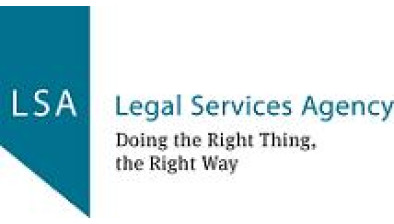Jacqueline Norwood: How accessible is the information social landlords provide tenants?

Jacqueline Norwood
Following on from its release last week, Jacqueline Norwood, executive director, TPAS Scotland, takes a closer look at the findings of a new report into the accessibility of information provided to tenants by social landlords.
Last year, TPAS Scotland, on behalf of the Scottish Government, carried out research into the accessibility of information that’s provided to social housing tenants by their landlord. A joint report from the Scottish Government and TPAS Scotland has now been published, and its findings and recommendations are likely to be helpful for social landlords looking to increase their accessibility.
To carry out the research, we held discussion groups, including with tenants and social landlord tenant participation officers and housing managers/directors; carried out desktop research into landlords’ websites and newsletters, checking for translation and read aloud functions; and we also issued a survey to a random sample of social landlords to gather further information.
Key findings
Social landlord discussion groups
During the discussion group, staff were asked what information is provided for tenants, and the answers included leaflets, Charter report, maintenance information, condensation/damp information, tenancy agreement, policies, newsletters, consultations, short videos, annual report and tenancy handbook. Most of the documents they listed are available on landlords’ websites in order to make them more accessible to tenants. The participants said they believed their organisation is generally good at ensuring documents are accessible and is willing to try new approaches to improving accessibility.
Good practice examples from this group included the following:
- North Ayrshire Council works directly with its tenants and customers on publications that are for them. This has allowed it to introduce a ‘tenant-approved’ badge on documents, including its tenant group manual, e-newsletter, sheltered handbook and a newsletter for its Gypsy/Traveller community.
- Ochil View Housing Association has, through training and tenant feedback, ensured that all of its documents are available in an easy-read format. It has also provided large print text versions for tenants who require this.
- Several landlords said they are focusing on digital inclusion and helping tenants to use technology in order to make their information more accessible. ‘Tea and tablet/tech’ events, where staff help tenants to use different types of devices and software, were given as an example of how organisations are helping to increase digital inclusion.
Tenant discussion groups
Tenants were asked about the information their social landlord shares with them, and they highlighted rent statements, newsletters, handbook, tenancy agreement, repairs information, service level agreement, consultations and letters.
Several tenants said that open days/roadshows are an informal and enjoyable way of hearing information from their landlord, and they also help to develop and improve relationships between tenants and landlords.
The majority of the tenants said they mainly receive paper-based information from their landlord; however, they noted a recent increase in the use of digital information. Others said they accessed information digitally and others at in-person meetings.
Most tenants said they thought information shared by their landlord is fully accessible. However, some participants said that, in some instances, more work is required to ensure this is the case. One tenant said they have literacy issues as well as no internet access, so they are unable to access information issued by their landlord.
The group shared examples of good practice, including:
- One tenant said their landlord had created videos for sharing information on repairs. They said this is an excellent way of sharing information with tenants in an accessible way and suggested it could be used to share other information.
- Some landlords provide newsletters digitally, with an option to receive a paper copy on request. While acknowledging that digital newsletters are both accessible and economical to produce, most participants wanted to retain a degree of choice in terms of format.
Social landlord survey
The landlord survey participants manage a range of property types, including general, sheltered and amenity housing. This allowed for comparison between general needs and specialist landlords in establishing any differences in accessibility of information as well as the support they provide to help tenants access information. However, no significant differences were identified.
Taking a look at the information landlords provide and how it’s issued, while there has been a shift to digital methods of information sharing, most landlords (92%) continue to provide paper copies of tenancy agreements and tenancy-related paperwork.
The majority of landlords are providing their newsletters in multiple formats, including paper and digital. The organisations that issue their newsletter digitally said a paper copy is available on request. Fifty percent of the landlords said their tenants had a role in the production of newsletters, with this generally involving individual tenants or panels of tenants reviewing articles and giving feedback before publication.
Routine tenancy-related letters, for example, arrears, anti-social behaviour, estate management, were found to be issued by most landlords in paper format. Some landlords also provide this information via text messages and in large-print format. The majority of landlords also issue safety-related information in paper format.
Landlords were asked if they had a system for recording their tenants’ communication preferences and 80% said they can store preferences on their housing management system.
The majority of landlords (76%) said their website is fully accessible, including for those with visual impairment, motor difficulties, cognitive impairments and those whose first language isn’t English. However, over a quarterly said their website isn’t fully accessible or they weren’t sure if it was.
Link Housing shared a good practice website accessibility example. Its website has an accessibility plug-in to provide a range of features, including multiple languages, screen readers and colour and size options. Its website provider has also optimised the platform for accessibility, and tenants are involved in sense checking information published on the site.
Recommendations
It is reassuring that landlords are providing information to tenants in a variety of formats in order to make it as accessible and easy to understand as possible.
A shift towards digital was accelerated during the Covid pandemic and this has largely become the default method of communication for newsletters, annual reports, performance reports etc. while key information, such as tenancy agreements, mainly continues to be provided in paper form.
The transition towards increased use of digital information maximises accessibility as websites can include a range of accessibility tools, including translation and reading aloud functions. However, maximising accessibility is dependent on tenants having internet access and appropriate equipment such as a phone, laptop or tablet. Landlords must also be aware that some of their tenants will simply still prefer to receive information in a paper format.
While the tenants we spoke to did acknowledge there are benefits to online meetings and digital engagement, many said they want to have a choice regarding how they receive information and how they engage with their landlord.
While we found that landlords are working hard to ensure their information is accessible and provided in formats that suit tenants’ needs, ensuring the following recommendations are made will support this:
- Landlords should ensure they are consulting their tenants on how they want to receive information and make sure their preferences are taken into account.
- Tenants should be involved in regular reviews into the accessibility of information, including websites.
- Landlords should consider working with their tenants to develop a ‘tenant-approved’ scheme, where tenants are involved in developing information. This allows for a ‘tenant-approved’ endorsement to be displayed on their documents.
- Landlords should consider and demonstrate how they identify and communicate with tenants and prospective tenants who have literacy difficulties.
- As part of their internal audit process, landlords should ensure their website is fully accessible and complies with current accessibility guidance.
- Landlords should consider the use of short videos to share information as these can be sent to mobile phones and posted on websites.
- Landlords should help tenants to access digital information, either via in-house support or in partnership with organisations that can provide specialist support services, for example, AbilityNet which works in partnership with BT and gives access to free webinars and factsheets.
TPAS Scotland can support social landlords with this work. If you would like to discuss how we can help your organisation, please contact enquiries@tpasscotland.org.uk
The full report can be found on the Scottish Government’s website.
This is the first of two long-read blogs on the joint Scottish Government and TPAS Scotland reports. The second blog can be found here.








